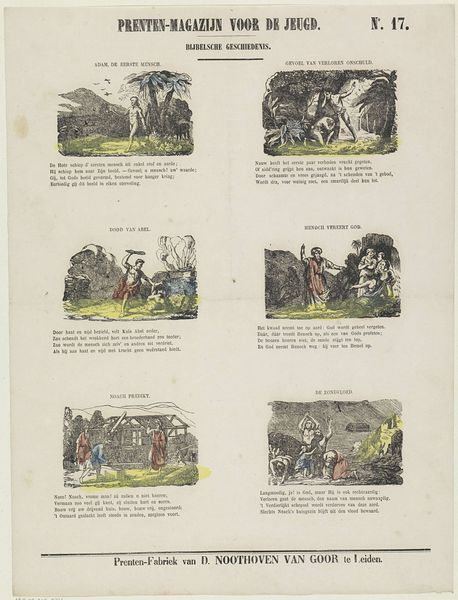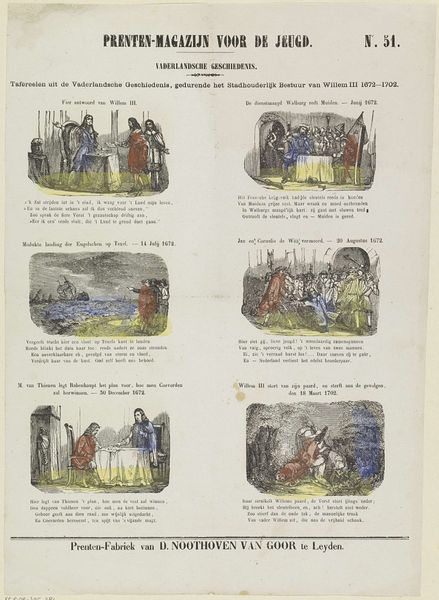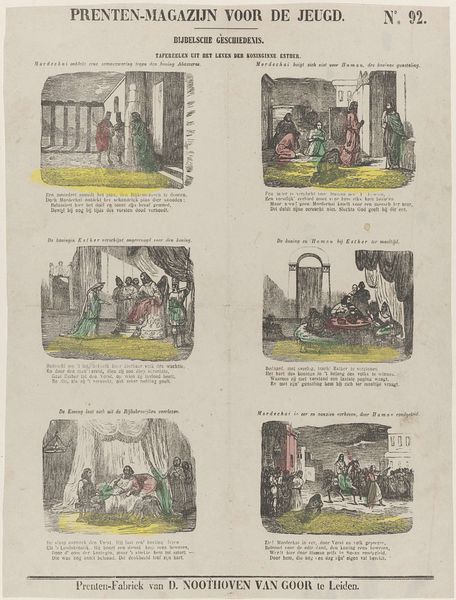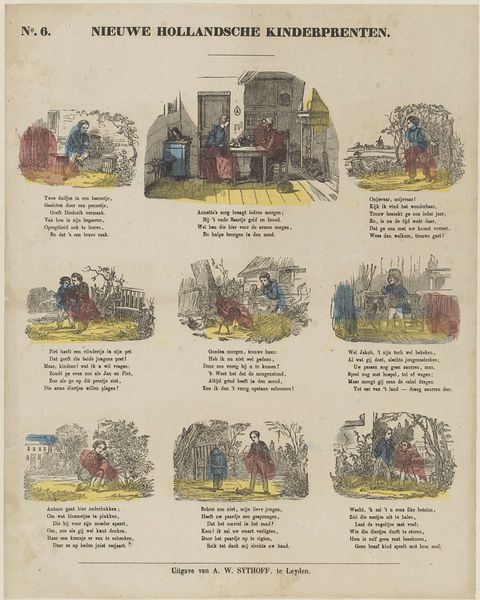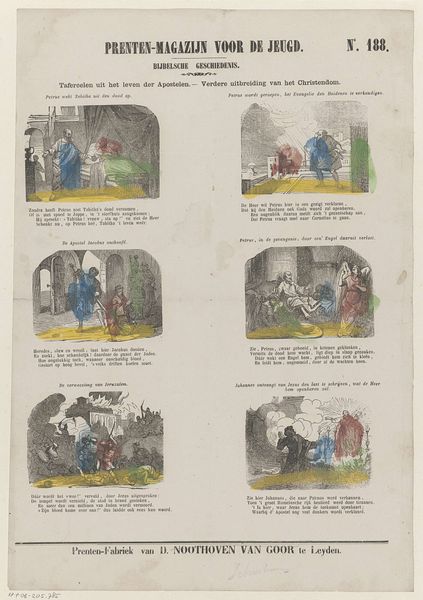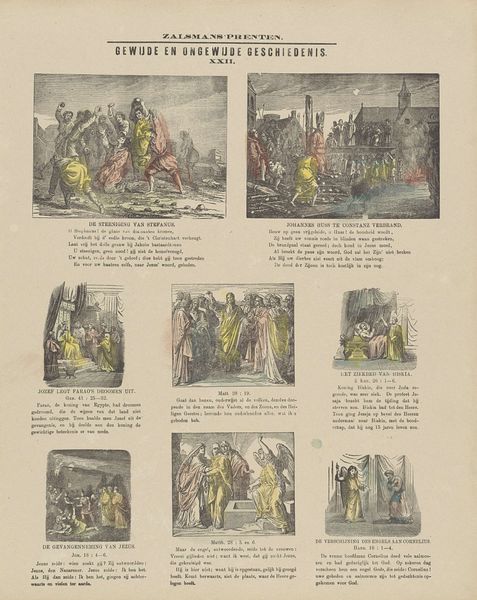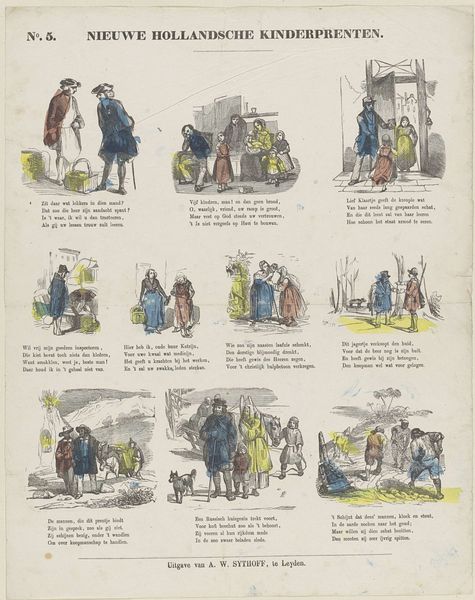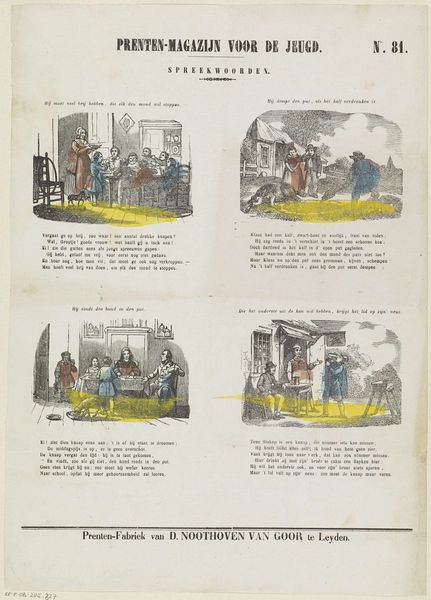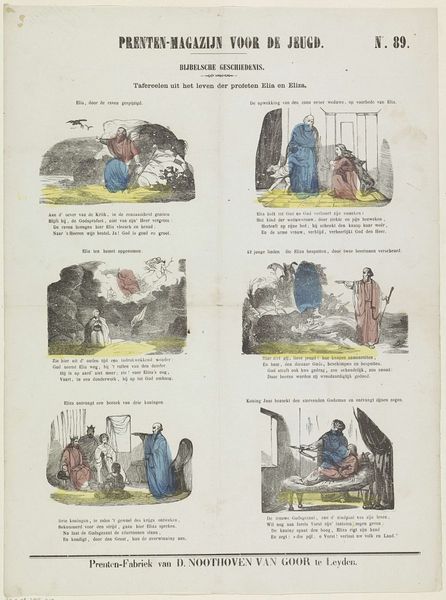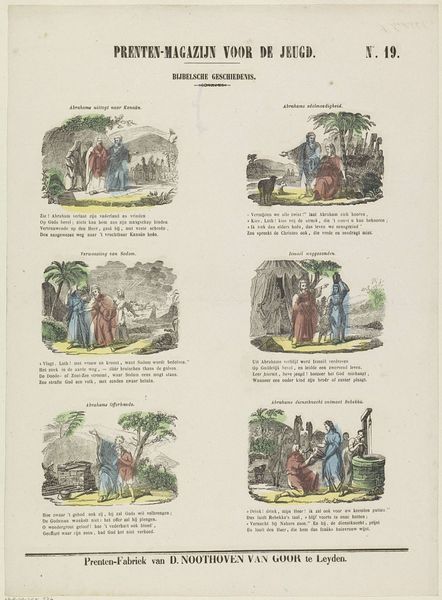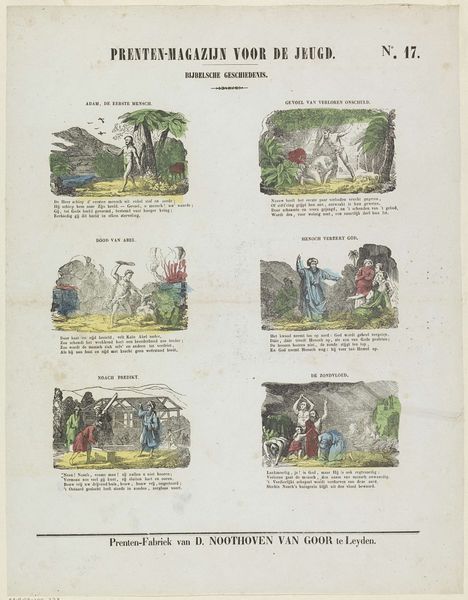
graphic-art, lithograph, print
#
graphic-art
#
narrative-art
#
lithograph
# print
#
figuration
#
genre-painting
#
history-painting
#
academic-art
Dimensions: height 427 mm, width 336 mm
Copyright: Rijks Museum: Open Domain
Editor: This is "Alphabet. Door elkander gezet. In drie prenten," dating from 1861 to 1929, at the Rijksmuseum. It's a lithograph print and strikes me as a sort of… playful commentary on society. It’s visually busy and has a narrative feel. What do you see in this piece, considering its historical moment? Curator: It's fascinating how this seemingly simple alphabet print layers social commentary beneath the guise of entertainment. Considering the context of 19th-century European colonialism, for example, how do you read the depiction in the images labeled 'I' and 'D'? Editor: Well, “I” shows “Indianen zoo zwart als Inkt” or “Indians as black as Ink,” and “D” is “Drommedarissen met Drie Drijvers,” or “Camels with three drivers." The portrayals seem quite… stereotypical and perhaps even a bit mocking? Curator: Exactly. These images aren't just innocent depictions; they're loaded with the power dynamics of the time. They reflect and reinforce a Western gaze that exoticizes and potentially dehumanizes other cultures. Consider also how images of women might enforce conventional roles. This was produced in an era when there were significant concerns about the cultural influences of art. Is the goal truly alphabetization here, or is something else implied? Editor: I hadn’t really thought about it that way. So, by placing these images alongside more ‘innocent’ or ‘everyday’ scenes from European life, it normalizes the colonial perspective as just another letter in the alphabet, so to speak? Curator: Precisely. It subtly integrates those unequal power relations into the cultural understanding of the alphabet. It’s not just about A, B, C; it’s about reinforcing a specific social order and worldview. Editor: That really changes how I see this. It's not just a fun alphabet; it's a coded message about power and representation. Curator: Absolutely. Examining art like this forces us to confront the historical baggage embedded within seemingly innocuous images and think critically about the messages they convey, intentionally or otherwise. It is, for me, an activist's job to reveal such uncomfortable messages. Editor: I learned to read familiar, ‘childish’ imageries under the scope of gender, class and race… Thank you for sharing such insight!
Comments
No comments
Be the first to comment and join the conversation on the ultimate creative platform.
